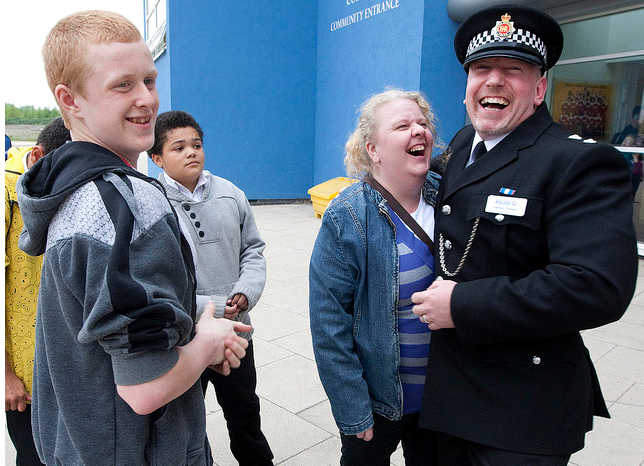Where Do I Feel Unsafe
2009-2011

Listening to people and acting on concerns about crime in their neighbourhood.
I had a cup of tea and a chat with Damian O'Reilly, a neighbourhood police inspector in Gorton, East Manchester, which is a part of the city where there are higher than average levels of disadvantage.
Damian is unusual in the police because he works in the same area where he was born, brought up and still lives.
I told him about City Poems and Where Were You Happiest to Arrive and we decided to use Thumbprint to try out a way that Damian's neighbourhood police team could listen to local people and reduce fear of crime.
Fear of crime depends more on perception than it does on actual crime rates in a neighbourhood, and is affected by things like broken windows, overflowing bins and badly looked after public spaces.
Even though it depends on perceptions, fear of crime is real enough to damage people's health.
As well as the police team, the Gorton neighbourhood police station had a community safety officer from Manchester City Council. The police could host the initiative, but most of the activity would need to be done by other organisations, such as the council or the local housing association. This would be coordinated by the community safety officer.
Our approach was based on knowledge generated by initiatives including Where Were You Happiest to Arrive, the Camden participatory budgeting process and even The Guardian Text Message Poetry Competition, all of which showed how to use a welcoming and inclusive way of connecting with people.
Building on the experience of these projects, we would let people living in Gorton know how to get in touch by distributing low cost flyers and posters. These would be a simple design with the warm feel of a community group, and be easy to change and develop in response to feedback.
The design of this printed material was just as critical to the success of the initiative as the digital technology.
Our idea was unique enough to attract modest funding from Nesta, the National Endowment for Science, Technology and the Arts, through its Reboot Britain programme, in order to build a bespoke system for managing the connections.
However, being part of a national programme brought us to the attention of Greater Manchester Police's corporate communications team.
They immediately tried to take over the public aspects of the initiative, and to impose the language, imagery and branding of one-way communications rather than that for effectively opening a conversation.
What followed was a long and energy-sapping battle in which Damian and me collected responses from people in Gorton to the corporate communications style in order to try and demonstrate that their approach was going to stop the idea from working.
They didn't really care whether it worked or not, and at one point we were told that "Home Office guidelines" meant we had to do what they said. We ended up with an uneasy compromise that still looked exactly like any other official leaflet.

When 300 of these were finally distributed effectively they did generate some responses.
From the report I wrote for Nesta:
I was so frustrated about what happened that a few months later I ignored corporate communications and made, and paid for, my own advert in a local community magazine.

This led to much more varied and interesting results which included involving local councillors as well council staff and the police. I'd be happy to have a chat about these outcomes and the whole project.
The same approach has since been taken up by a different police force, and I now regularly see information screens and printed material like this at stations

I've even seen beer mats in station bars.

Beer mats are very effective for making connections, as shown by City Poems in 2003 and the Institute of Physics pub physics campaign .
An article was published in the Guardian about our initiative, and Damian went on to become the Community Policeman of the Year for his work in Gorton, including Where Do I Feel Unsafe.